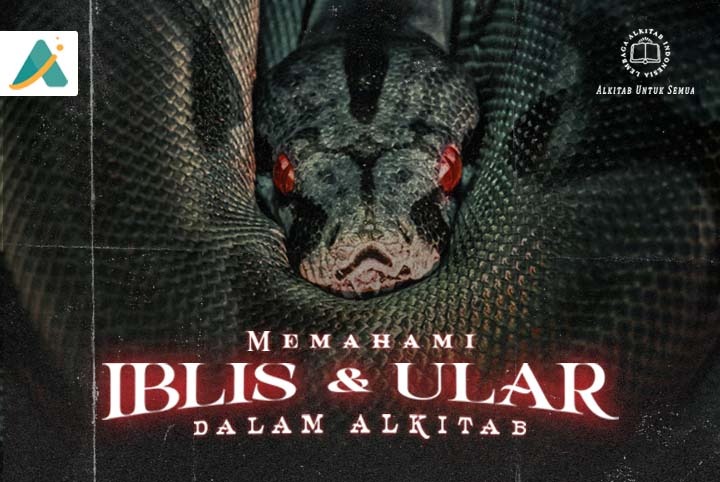The Pentecostal movement has today become one of the largest religious forces in global Christianity, with more than 600 million adherents worldwide. This massive growth not only reflects institutional expansion, but also a strong spiritual dynamic. In Indonesia alone, the presence of Pentecostal churches marks an important chapter in the development of modern Christianity.
Historical and Theological Roots of the Pentecostal Movement
Pentecostalism did not emerge in a historical vacuum, but is rooted in a long dynamic of spiritual renewal and theological struggle. Bill Menzies suggests four models of the relationship of the contemporary church to the apostolic church: (1) Roman Catholic as a model of direct continuity, (2) Reformed as a reformed heritage, (3) Restorationist as a comprehensive restoration effort, and (4) Pentecostal as a progressive restoration through revival.
Four Waves of the Global Pentecostal Movement
The global Pentecostal movement can be classified into four major waves:
-
Classical Pentecostals (Early 1900s)
Began through a revival on Azusa Street, Los Angeles (1906), led by William J. Seymour. The movement emphasized the baptism of the Holy Spirit as a second experience after conversion, with early evidence of tongues (glossolalia). Its subdivisions include:
-
Classical Trinitarianism (e.g. Assemblies of God),
-
Non-Trinitarian or "Jesus Only" (e.g. United Pentecostal Church),
-
Holiness Pentecostals who emphasize sanctification of life.
-
The Charismatic Movement (1960s)
Emerged from within mainstream churches such as Catholic, Anglican, and Lutheran. The movement emphasizes spiritual renewal through the gift of the Holy Spirit but does not necessarily make tongues a requirement for evidence of the baptism of the Holy Spirit. Its approach is more liturgical and open to traditional church structures. -
Third Wave (1980s)
Led by figures such as John Wimber and C. Peter Wagner. The focus was on power ministry, spiritual warfare, and apostolic authority, but did not demand the experience of the baptism of the Holy Spirit as a separate moment of salvation. -
Neo-charismatics (1990s and later)
Type of independent, post-denominational churches with contemporary names, such as Hillsong or Bethel Church. Characteristic are creative worship styles, visualization of faith, and an emphasis on prosperity theology.
Historical Context in Indonesia
The Pentecostal movement was introduced to Indonesia by two ex-Salvation Army missionary families: Cornelis – Marie Groesbeek and Dirkrichard – Stien van Klaveren, who arrived in Jakarta in 1921. Despite facing resistance from the Dutch colonial government, particularly in Bali, they eventually centralized services in East Java.
In 1924, the movement was officially registered as De Pinkster Gemeente in Nederlandsch-Indie. In 1942, its Indonesian name was adopted as the Pentecostal Church in Indonesia (GPdI). Internal tensions began to emerge as early as 1925, including controversies over the role of women in ministry and the issue of Trinitarian theology. Nona Alt, one of the early female leaders, founded a new organization called De Pinkster Zending in 1931.
Afterward, fragmentation occurred. In 1932, Rev. Thiesen founded the Pentecostal Movement; and in 1941, Rev. D. Sinaga founded the Pentecostal Church of North Sumatra. The years 1946 onwards saw the emergence of new denominations such as the Church of Jesus Almasih (GIA) and GBIS. Today, more than 40 Pentecostal denominations exist in Indonesia.
Not only developing in exclusive church spaces, since the 1990s the charismatic movement has also seeped into mainstream churches such as HKBP, GPIB, and even the Catholic Church, marking a phase of integration and adaptation of Pentecostal spirituality across the church spectrum.
Theology of the Full Gospel
The distinctive doctrine of Pentecostal churches is known as the Full Gospel, which includes:
-
Jesus as Savior – emphasizing personal life transformation.
-
Jesus as Baptist – especially in the baptism of the Holy Spirit.
-
Jesus as Purifier – focus on holy living though sometimes more individual than social.
-
Jesus as Healer – doctrine of divine healing key to church growth.
-
Jesus as the coming King – active eschatology awaits the coming of Christ.
These five aspects form a unique theological identity that distinguishes Pentecostalism from other Christian denominations.
The doctrine of the baptism of the Holy Spirit
In the Pentecostal tradition, there are three general views regarding the baptism of the Holy Spirit:
-
As a second experience (the second work of grace), separate from initial conversion.
-
As part of an ongoing process without evidence of tongues.
-
As an explicitly marked experience through tongues as initial evidence.
The primary references for this view are found in the five accounts of the outpouring of the Holy Spirit in Acts, including:
-
Acts 2 – Day of Pentecost
-
Acts 8 – Samaritan Revival
-
Acts 9 – Paul's baptism
- Acts 10 – The Household of Cornelius
-
Acts 19 – The Ephesian Elders
.
The narrative of this story shows that the experience of the Holy Spirit is not only about salvation, but also empowerment for ministry.
16 Articles of Faith of the Pentecostal Church
Pentecostal churches generally formulate their doctrine in the following 16 articles of faith:
-
The Bible was inspired
-
The One and Only True God
-
The Lordship of Jesus Christ
-
The Fall of Man in Sin
-
Human Salvation
-
Sacraments of the Church
-
Baptism of the Holy Ghost
-
The initial physical sign of the Baptism of the Holy Spirit: Speaking in tongues
-
Sanctification
-
Church and its Mission
-
Service
-
Divine Healing
-
Blessed Hope
-
Christ's Thousand Year Reign of the Kingdom of God
-
Eternal Judgment
-
New Heavens and New Earth.
These points become the theological foundations that distinguish Pentecostal identity.
Spirituality of Tongues
A key distinctive feature in Pentecostal spiritual expression is the use of tongues, which is considered:
-
As a sign of faith
-
Evidence of the Holy Spirit's outpouring
-
Spiritual communication tools with God
-
A means of building oneself up spiritually
-
Signs that speak to unbelievers
-
Media of prayer and worship
-
Building the body of Christ when accompanied by translation
Therefore, tongues is not only a personal spiritual expression, but also a prophetic and communitarian function.
The Pentecostal movement, with all its diversity of expression, shows that Christian spiritual life is always open to renewal. Amidst the challenges of modernity and globalization, Pentecostal churches have proven their capacity to bridge authentic spiritual experience with contextual relevance. Its history and theology invite us to reflect on the meaning of the presence of the Holy Spirit in the church life and faith of Christians today.

























